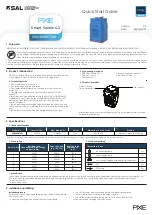
200
•
A schedule cannot contain any of these commands:
telnet
,
ftp
,
ssh2
, and
monitor process
.
•
A schedule does not support user interaction. If a command requires a yes or no answer, the
system always assumes that a
Y
or
Yes
is entered. If a command requires a character string
input, the system assumes that either the default character string (if any) or a null string is
entered.
•
A schedule is executed in the background, and no output (except for logs, traps, and debug
information) is displayed for the schedule.
Configuration procedure
To configure a schedule for the device:
Step
Command
Remarks
1.
Enter system view.
system-view
N/A
2.
Create a job.
scheduler job job-name
By default, no job exists.
3.
Assign a command to
the job.
command id command
By default, no command is
assigned to a job.
You can assign multiple commands
to a job. A command with a smaller
ID will be executed first.
To assign a command (command
A) to a job, you must first assign the
job the command or commands for
entering the view of command A.
4.
Exit to system view.
quit
N/A
5.
Create a schedule.
scheduler schedule schedule-name
By default, no schedule exists.
6.
Assign a job to a
schedule.
job job-name
By default, no job is assigned to a
schedule.
You can assign multiple jobs to a
schedule. The jobs will be executed
concurrently.
7.
Assign user roles to the
schedule.
user-role role-name
By default, a schedule has the user
role of the schedule creator.
You can assign up to 64 user roles
to a schedule. A command in a
schedule can be executed if it is
permitted by one or more user roles
of the schedule.
Summary of Contents for FlexNetwork 10500 Series
Page 139: ...130 Sysname display version ...
















































